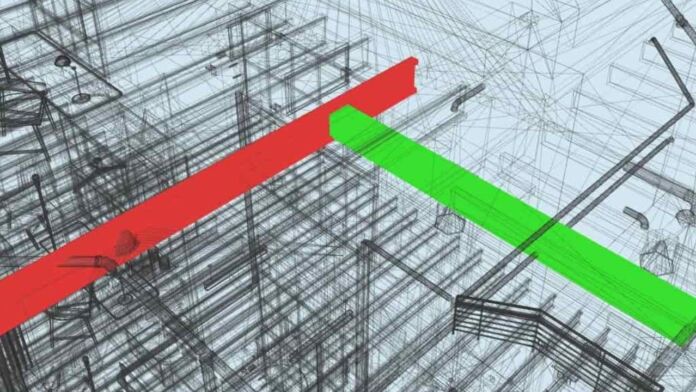Building Information Modeling (BIM) has emerged as a game-changer in the rapidly evolving construction world. BIM is a digital representation of a building’s physical and functional characteristics, providing a collaborative platform for architects, engineers, and construction professionals to work together seamlessly. One of the key advantages of BIM is its clash detection capability, which helps to identify potential conflicts between different building elements during the design phase, thus minimizing errors and delays in the construction process.
What is Clash Detection?
Clash detection in BIM identifies conflicts or clashes between building elements, such as architectural components, structural elements, and mechanical, electrical, and plumbing (MEP) systems. These clashes occur when two or more elements occupy the same physical space, leading to complications during construction. Clash detection is typically performed using specialized software that analyzes the 3D models and flags areas where elements intersect or interfere with each other.
By employing clash detection through BIM services in the early stages of a construction project, stakeholders can identify and resolve potential issues before they become costly problems on-site. This proactive approach not only improves the quality of the final construction but also saves time and resources, leading to significant benefits for all parties involved.
Common Sources of Clashes in Construction Projects
In complex construction projects, clashes can arise from various sources. Integrating architectural, structural, and MEP systems, each designed independently, increase the likelihood of conflicts between the various components. For instance, an HVAC duct may intersect with a structural beam, or a wall may not align correctly with the plumbing system.
Interference issues and coordination challenges also contribute to clashes. Coordination becomes critical with multiple teams working on different aspects of the project. Miscommunication or lack of proper coordination between groups can lead to conflicts that, if not detected and resolved early, can result in costly rework and project delays.
Implementing Clash Detection in BIM Workflows
Successfully implementing clash detection requires adopting BIM modeling software capable of performing clash detection. BIM models are created using sophisticated 3D modeling tools that allow different disciplines to collaborate and contribute to the project. Clash detection software analyzes these models to identify potential conflicts.
Integrating clash detection into the design process is essential to maximize its benefits. Collaboration between various project stakeholders, including architects, engineers, contractors, and subcontractors, ensures comprehensive clash detection coverage. Regular coordination meetings allow teams to discuss and resolve clashes collaboratively.
Clash Detection Best Practices
To ensure effective clash detection, several best practices should be followed:
- Setting up Clash Detection Rules and Parameters
Defining specific rules and parameters tailored to the project’s requirements ensures that the clash detection software focuses on critical areas of concern and avoids inundating teams with trivial issues.
- Establishing a Clash Resolution Protocol
A well-defined protocol for handling clashes ensures that identified conflicts are addressed promptly. The protocol should outline responsibilities, deadlines, and communication channels for resolution.
- Managing and Prioritizing Clash Resolutions
Not all clashes are of equal importance. Prioritizing clashes based on their impact on project timelines, cost, and safety helps allocate resources efficiently and tackle high-priority conflicts first. Clash detection through BIM services, such as Revit drafting services, is essential for identifying and resolving disputes early in the construction process.
Benefits of Clash Detection in Construction
The incorporation of clash detection in construction workflows offers numerous benefits, including:
- Identifying and resolving clashes early reduces the need for on-site rework and costly change orders. This leads to smoother construction progress and reduces the number of Request for Information (RFI) instances.
- Resolving clashes before construction commences ensures fewer unexpected disruptions during the build phase, helping keep the project on schedule.
- Clash detection prevents costly rework and the need for corrective actions, resulting in substantial cost savings throughout the project.
Conclusion
Clash detection is a critical component of the BIM process that significantly improves construction efficiency by minimizing errors and delays. By proactively identifying and resolving clashes during the design phase, construction teams can save time and resources, ultimately leading to successful and timely project delivery.
Embracing clash detection in construction projects is not only a wise investment but also a testament to the industry’s commitment to innovation and excellence. As the construction sector evolves, clash detection remains an indispensable tool in pursuing construction excellence.

